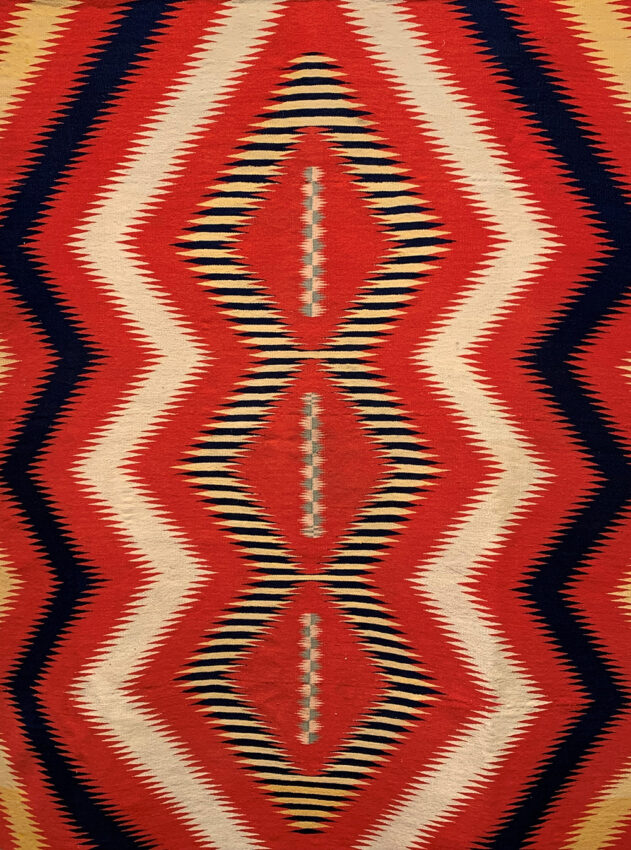
Founders Gallery of Native American Art, North Building
Eye Dazzlers: Marvels of Navajo Weaving from the Hilbert Collection
February 23, 2024 – May 31, 2025
Curated by Hilbert Museum Staff
The artistry and cultural significance of Navajo weaving have captivated individuals worldwide for centuries. Among the various styles and designs that emerged during the late 1800s to early 1900s, the “eye dazzler” blankets hold a special place.
These vibrant and intricate textiles, created by Navajo women, not only showcased their exceptional weaving skills but also represented the resilience and creativity of the Navajo people during a period of immense cultural change.
The late 1800s to early 1900s were marked by significant changes for the Navajo people. The trauma of forced relocation, military conflicts, and the encroachment of settlers threatened their traditional way of life. The women weavers, haunted by memories of the Long March and the Navajos’ incarceration at Bosque Redondo, and now equipped with a full spectrum of yarn colors, developed a new, highly expressionistic style of weaving, often done with no written patterns. They used both traditional elements and new design features, including bold serrated diamonds, kaleidoscopic geometric shapes, and colors that visually seem to “vibrate” against each other. These weavings would come to be known as “eye dazzlers.”
These “eye dazzler” blankets have sometimes been referred to as forerunners of Op Art, Color Field or other abstract art movements of the midcentury. Though the intent of the Navajo weavers is very different from that of these later abstract artists, the interest in creating an optical experience through color contrasts and the illusion of “vibrating” colors and after-images is the same.
Artists including Frank Stella, Jasper Johns and Andy Warhol collected Navajo eye-dazzler blankets, and they appreciated these weavings as genuine art masterpieces. Mark Rothko and Robert Rauschenberg proclaimed their admiration. By the early 1970s, Georgia O’Keeffe, Donald Judd, Stella and others helped create exhibitions featuring eye-dazzler blankets, with a resulting surge in eye-dazzlers’ popularity among curators. In the decade 1973 to 1983, the market price for eye dazzlers skyrocketed ten times or more in value.
The irony was that the original artists – the Navajo women weavers whose names have been lost to history – would never profit from these sales or from the new recognition. Contemporary Navajo weavers have revived the eye-dazzler style, and today a registry exists to ensure that every new weaving can be attributed to an artist in the future.
Tickets/Reservations
The Hilbert Museum recommends FREE online reservations for entry. Guests who arrive without a reservation will be assisted by our staff as available and admitted as space permits. We look forward to seeing you!